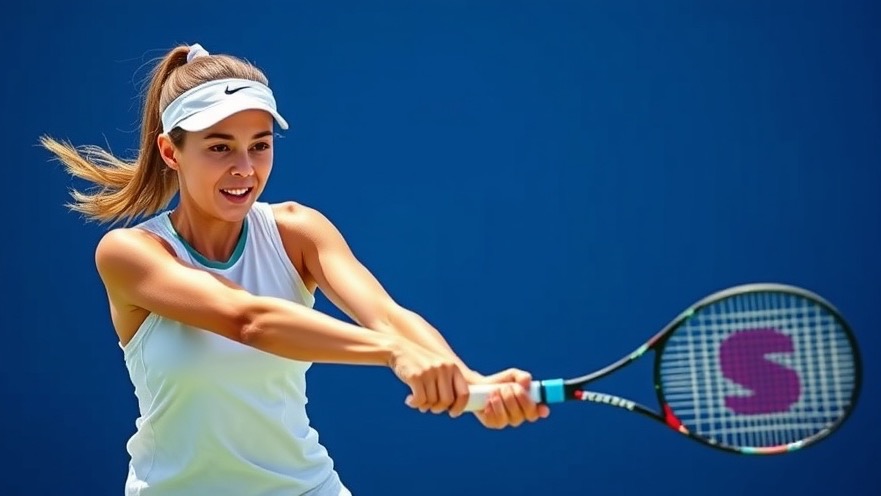
Perfecting Your Forehand: Say Goodbye to the Windshield Wiper Technique
Tennis enthusiasts understand the value of a strong forehand, but many struggle with that darn windshield wiper motion that makes their swings look awkward and forced. In today's tennis world, aesthetics matter just as much as technique, and it's time to elevate your game. The windshield wiper technique is characterized by a follow-through that mimics the motion of wiping a windshield—circular and somewhat abrupt. While many players believe this helps impart topspin, it can actually hinder your performance. So how can you refine your technique while ensuring you keep that beautiful, natural follow-through? Let's dive into it.
In 'How to perfect the wind shield wiper forehand,' the discussion dives into the intricacies of forehand movements, prompting us to analyze how to eliminate the windshield wiper technique for better performance.
Understanding the Mechanics Behind Your Swing
At the heart of the windshield wiper issue is a misunderstanding of the relationship between your initial shot and your follow-through. If you're forcing the follow-through, it's likely that your initial swing may be off. The follow-through should be an effortless extension of your swing, not a forced action. Consider your swing as a fluid motion, like a dancer gracefully finishing a pirouette. The goal is to have your racket continue its upward motion after it makes contact with the ball, rather than abruptly stopping before doing so. This requires an intentional setup during your swing.
Changing Your Intention: The Key to an Aesthetic Follow-Through
The transition from an aesthetic swing to a forced windshield wiper comes down to your intention. Instead of merely pushing the ball, aim to create upward momentum as you strike. This subtle shift can significantly impact the fluidity of your swing. Imagine your racket as an extension of your arm intending to lift the ball—not just to hit it. By focusing on an upward motion during contact, you'll find that your follow-through will naturally align itself, presenting a cleaner, more appealing form. Consider this: when you synchronize your intention with your technique, you unlock your full potential and play seamlessly.
Utilizing Slow-Motion Video Analysis for Improvement
An effective way to see where you can improve is by recording your swings in slow motion. Watching your technique can reveal important details like the exact moment when your racket head begins to rise. Ideally, your racket should start below the ball, and by the time it's making contact, it should already be lifting. If your follow-through doesn’t match this pattern and starts going up after contact, this reinforces that windshield wiper motion that so many are trying to avoid. Track your progress over time; initially, it may take extra attention and patience, but video analysis sets you on the path to a more perfect form.
Practice with Purpose: Building Toward the Ideal Swing
Perfecting your forehand does not stop with understanding; it requires deliberate practice. Break down your swing into manageable parts and practice each aspect slowly at first, then gradually increase your speed. As you incorporate strength and racket speed, don’t lose sight of your swing path. Maintain that upward intention all the way through every hit. The goal is to reach a point where even as you hit harder, your swing remains true and fluid. Invest time into what might initially feel awkward, and soon enough, you’ll find a natural rhythm that will have the spectators in awe.
Elevate Your Game: Moving Beyond Basics
Honing in on your forehand requires constant reflection and refinement. While mastering the fundamentals can take a player's game to extraordinary levels, elevating your overall performance also hinges on developing a deeper understanding of the nuances of each shot. Avoid the common pitfalls of forcing your movements and instead work towards fluidity and performance accuracy. Remember that a deft touch can mean the difference in critical match situations. Strive for clarity in every swing; your body will thank you as your confidence blossoms.
If you're ready to embrace a world beyond the windshield wiper swing, commit to practicing with focus and intention. The path to a more graceful and competent forehand is one of patience and diligence. So grab your racket, take a video of your swings, and let’s take that forehand to the next level!
 Add Row
Add Row  Add
Add 




Write A Comment